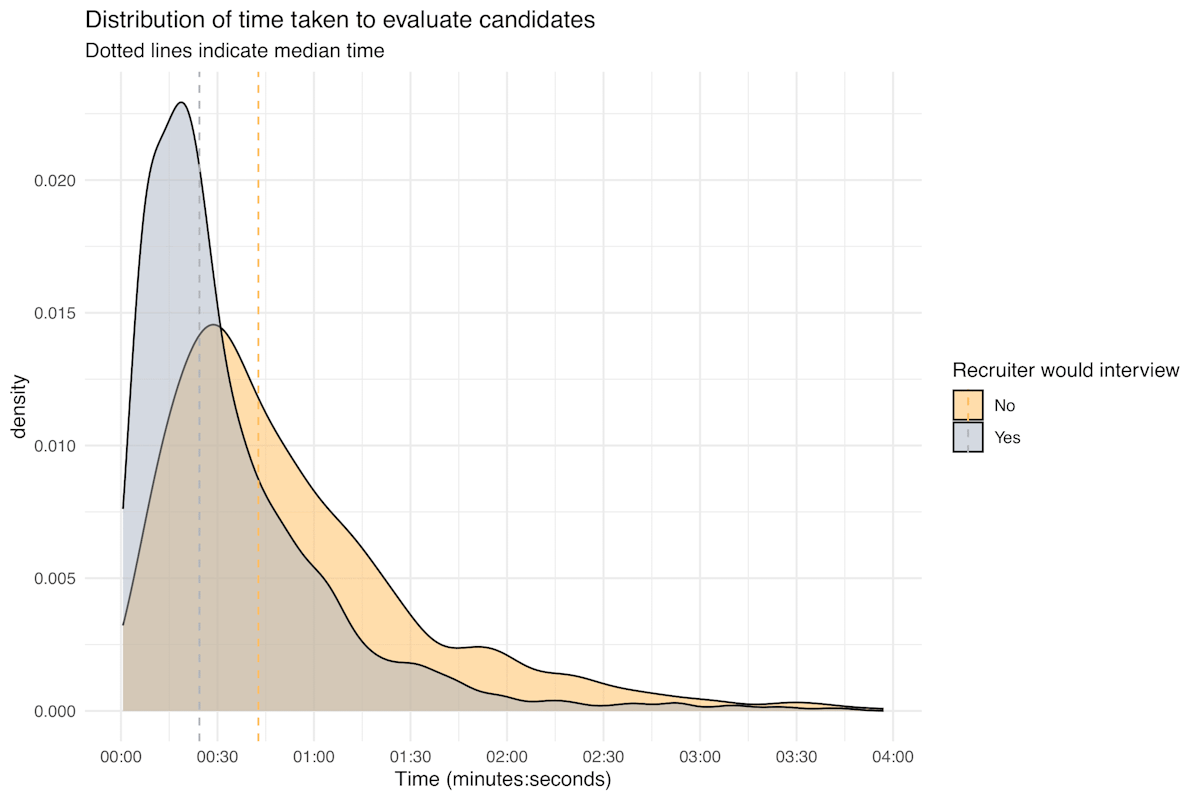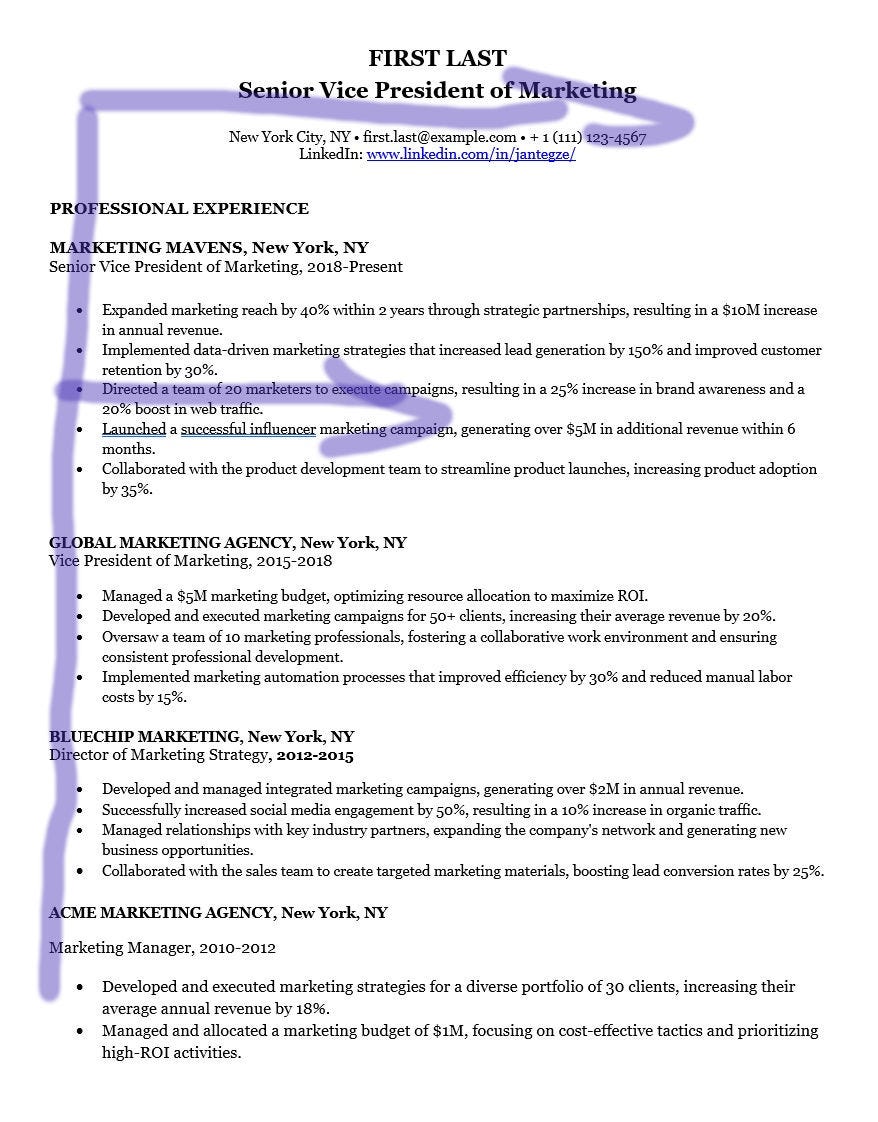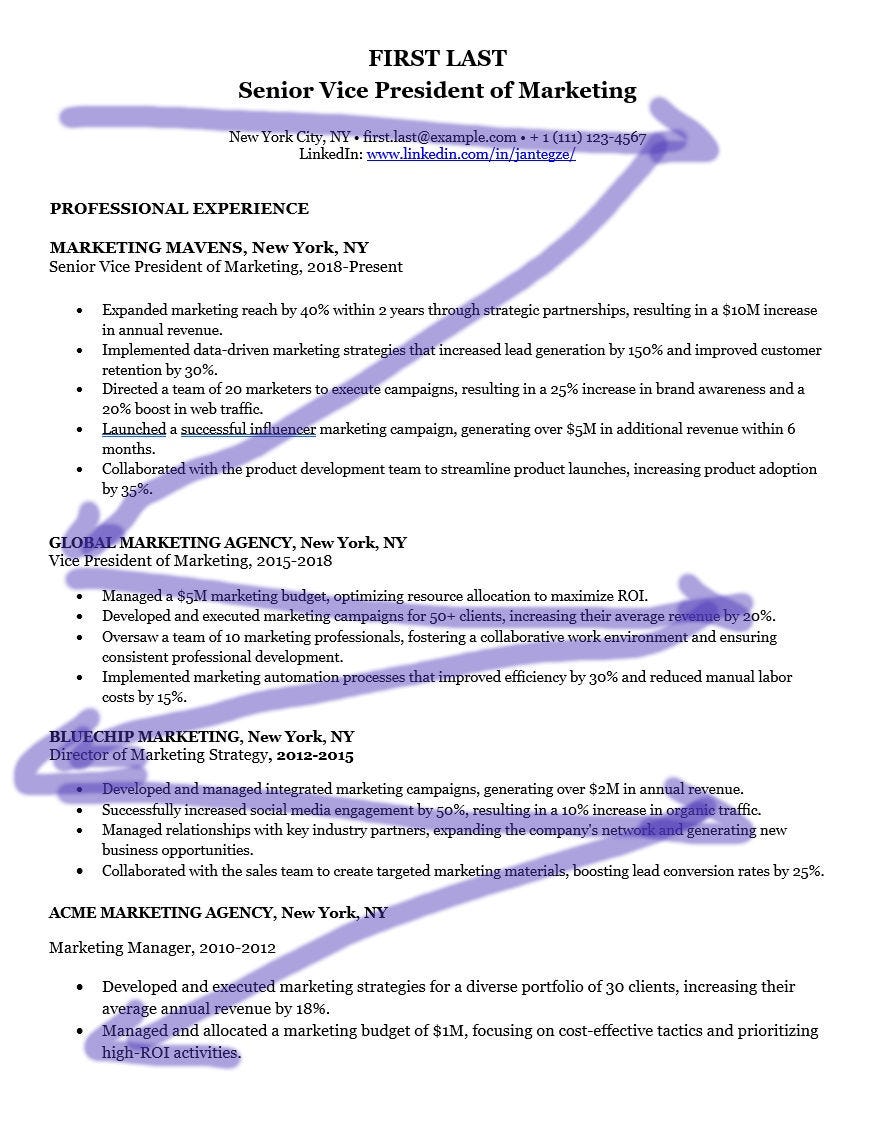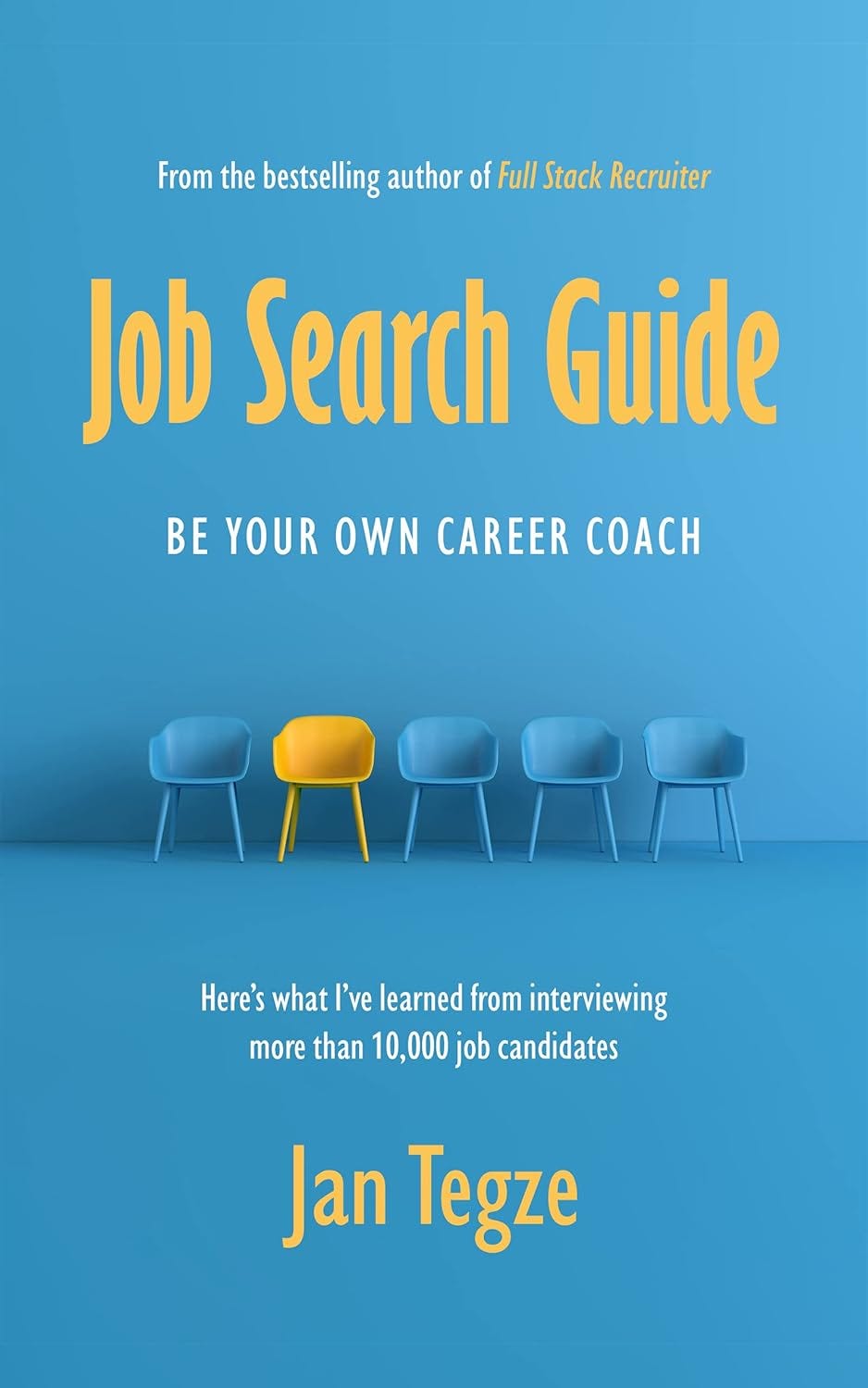How Recruiters Really Read Your Resume
Learn how recruiters scan resumes, why the F-shaped and Z-shaped patterns matter, and how to stand out by guiding their eyes.
When a recruiter opens your resume, they don’t sit down with a coffee and read it line by line like a novel. They scan it. Fast. That might sound harsh, especially if you’ve spent hours polishing every word, but it’s the reality of hiring.
Humans don’t read resumes as you might expect. Eye-tracking studies have shown that recruiters follow very specific scanning patterns when reviewing resumes. And those patterns aren’t random. They’re shaped by how our brains are wired to search for relevant info quickly.
The two most common patterns are called the F-shaped and Z-shaped scan patterns. Understanding these can make a huge difference in how your resume is seen. These patterns reveal where recruiters are most likely to focus their attention, and where your most important details need to live.
But there’s another layer to this. Even if your layout is perfect, recruiters are still human. That means they’re influenced by cognitive shortcuts and biases that shape how they interpret what they see.
This newsletter is sponsored by HeadshotPro
Your resume gets you noticed, but your LinkedIn photo makes the first impression. Did you know that profiles with professional headshots get up to 14 times more views from recruiters?
With HeadshotPro, you don’t need to book an expensive photoshoot. You can generate a polished, professional-looking headshot in minutes, perfect for your LinkedIn profile, CV, or portfolio. Try HeadshotPro today and put your best face forward.
Types of Reading Patterns
Just because a human is now looking at your resume doesn’t mean it’s being read carefully. Recruiters work under serious time pressure. Some roles get hundreds of applicants. So instead of reading every line, recruiters scan quickly for signals that tell them, “This person might be worth a closer look.”
This is where scanning patterns come in. Recruiters don't move their eyes from top to bottom as if reading a book. Instead, they skim in ways that help them pick up the most important details fast. Eye-tracking research shows consistent patterns in how people look at resumes. These patterns help explain why some resumes get attention while others barely register.
One important finding that I also need to mention comes from a study, which found that “slowing down is associated with better decisions.” In other words, when recruiters take more time to actually review a resume, they tend to make better hiring calls. But the problem is, they often don’t slow down, especially during the first round of resume reviews. I'll be sharing more tips at the end of this article on how to slow down recruiters while they are reading your resume and get your resume more attention.
The study “Are recruiters better than a coin flip at judging resumes?” confirms that the median time spent on resume evaluations was just 31 seconds. It’s not the 6 seconds that some so-called gurus or Instagram/TikTok scammers claim; they say that to sell you an ATS resume template, one you could easily get for free here: Free Resume Templates.
That’s why your resume layout, structure, and the way you present information matter. If your resume doesn’t guide the recruiter’s eyes to the right spots quickly, they might miss exactly what makes you a strong candidate.
The Most Common Way Resumes Are Scanned
Let’s start with the most well-documented pattern recruiters follow: the F-shaped pattern. This scanning style is exactly what it sounds like, the reader’s eyes move across the page in a shape that resembles the letter “F.” It’s how people naturally read blocks of text on screens, and resumes are no exception.
Here’s how it typically goes:
First, recruiters scan across the top of the page. This is where your name, contact info, and professional summary usually live. If this section feels cluttered or weak, you’ve already lost their attention.
Next, their eyes move down the left side. They’re looking for familiar anchors like job titles, company names, and dates.
Then, they make short horizontal glances to the right side of the page when something catches their interest, usually the beginning of bullet points or bolded text that stands out.
How to Format for the F-Shaped Scan
You don’t need fancy design tools or a resume template that costs money. What matters is structure and clarity. Here’s how to work with the F-pattern:
Put your most important info at the top and left. This means your name, phone number, email, LinkedIn, and a short, strong professional summary that says who you are and what you do best.
Use clear section headers like “Experience,” “Skills,” and “Education.” Make sure they’re bold and aligned to the left. Don’t make people hunt for them.
List your work experience in reverse-chronological order, starting with your most recent role. Recruiters want to see what you’re doing now not what you did twenty years ago.
Use bullet points that begin with strong action verbs like “led,” “built,” “increased,” or “managed.” Avoid vague language like “responsible for.”
Add numbers whenever possible. Quantifiable achievements (like “Increased sales by 40%”) give a clear, immediate sense of impact.
It’s important to mention your work visa (right below your contact details), if you already have one. This way will not be rejected immediately by a recruiter or hiring manager.
Why the F-Shaped Pattern Works
It works because it matches how our brains are wired to process information quickly. We read top-down, left to right. We scan for anchors, headlines, and bolded terms. Recruiters are no different.
When your resume follows this pattern, you make their job easier. And when you make their job easier, you increase your chances of getting a callback.
The Z-Shaped Pattern: A Visual Scan for Creative Resumes
Not all resumes follow the same scan path. If you’re in a creative field or using a more visually structured layout, recruiters might read your resume differently, in what’s called the Z-shaped pattern.
This pattern is more common when a resume is less text-heavy and includes visual elements like columns, icons, or color blocks. Instead of scanning in a straight line down the page, the recruiter’s eyes move in a zig-zag, forming a shape like the letter Z.
What the Z-Shaped Pattern Looks Like
Here’s how it typically flows:
Top-left to top-right – This is where the eyes land first, usually on your name, title, and maybe a link to your portfolio or a skills highlight.
Diagonal sweep to the bottom-left – The eye cuts across the middle, passing over your summary or key highlights.
Bottom-left to bottom-right – Finally, they scan the last section, often education or extra skills.
It’s a fast visual loop that picks up key pieces without diving deep into every word.
When to Use a Z-Shaped Layout
This layout works well for roles in:
Graphic design
Marketing
UX/UI
Video production
Copywriting
Content creation
If you're applying for roles where creativity is part of the job, a clean and well-designed Z-pattern resume can show off your visual thinking and make key info easy to spot.
And this is important: don't overdo the design. Too many colors, graphics, or unusual fonts can backfire and make your resume hard to read or confusing for ATS systems. Always make sure it’s still readable and skimmable.
Looking for a new job can feel overwhelming. Job Search Guide makes it simple. This book shows you how to write a CV that gets noticed, prepare for interviews with confidence, and land the offer you want. Written by a recruiter, this book gives you insider tips you won’t find on Google. If you want clear steps, real examples, and proven advice to get hired faster, this is the book for you.
How to Format for the Z-Shaped Scan
If you’re aiming for a Z-pattern, here’s what helps:
Top-left corner: Your name, job title, and contact info.
Top-right corner: A portfolio link, personal branding statement, or a standout skill.
Center diagonal path: Place your strongest section here, maybe a career highlights box, summary of qualifications, or a clean skill bar.
Bottom section: Use this space for your work history, education, and certifications. Keep it simple and clean.
Why the Z-Pattern Works for Creative Roles
It’s more visual, less text-heavy, and creates a natural visual flow. When designed well, it subtly guides the recruiter’s eye through your story, starting with who you are and ending with why you’re a solid candidate.
But this approach isn’t for everyone. If you’re applying for traditional roles (finance, engineering, legal), stick to the F-pattern. In those fields, creativity in your layout might be seen as distracting rather than helpful.
The Human Element: Why Bias Still Shapes Resume Reviews
Even with all the eye-tracking data and scanning patterns, there’s one thing that can’t be mapped with heatmaps or predicted by design: human bias.
Recruiters aren’t robots. They’re people making fast decisions with limited information, often while juggling dozens or even hundreds of resumes at once. That’s where cognitive biases sneak in. And these mental shortcuts can shape how your resume is interpreted or ignored.
Here are four common ones that show up in resume reviews all the time:
1. Confirmation Bias
This is when someone looks for evidence that supports what they already believe.
Let’s say a recruiter thinks candidates from big-name companies are stronger. If your resume shows Google or Amazon, they’ll focus on that and assume the rest is solid. But if they don’t see a “top” company, they might skim past your real achievements.
What you can do:
Use your summary and bullet points to clearly show outcomes and impact. Make it hard to ignore your value, even if your past employers aren’t famous.
2. Affinity Bias
People naturally favor those who seem similar to them. Maybe you went to the same school. Grew up in the same city. Have a similar name or background.
This bias isn’t always intentional, but it happens, and it affects who gets more time, more attention, and often more chances.
What you can do:
You can’t control someone else’s bias, but you can focus on clarity and professionalism. A well-structured, easy-to-read resume gives less room for snap judgments and more room for your skills to stand out.
3. Halo and Horns Effect
This one’s simple: one strong (or weak) detail changes how the whole resume is viewed.
If your first bullet point is impressive, the recruiter may assume the rest is strong. If your formatting is sloppy or there’s a typo in the headline, that negative impression sticks even if the content is great.
What you can do:
Start strong. Make sure the first few lines of each section highlight your best work. Proofread carefully. And yes, design matters, clean formatting helps avoid the “horns” effect. I always suggest focusing on your last three jobs and making sure your bullet points leave a strong impression.
4. Anchoring Bias
This happens when the recruiter places too much weight on the first thing they see. That might be your job title, current company, or even your degree. Everything else gets compared to that “anchor.”
What you can do:
Write a focused, clear professional summary at the top of your resume. Guide the reader toward what you want them to notice first, your results, not just your job title.
How to Get Recruiters to Notice
At the end of the day, your resume is not a story waiting to be read, it’s a signal waiting to be scanned. Recruiters aren’t analyzing every line, they’re searching for proof that you can do the job. Patterns like F-shape or Z-shape show where their eyes go first, but structure, clarity, and impact decide whether they stop and pay attention.
So keep it simple, keep it focused, and make it easy for someone in a rush to spot your value. Clear sections, strong action verbs, and quantifiable results will always win over buzzwords and clutter.
Remember this, a recruiter doesn’t need to read your whole resume to see your potential, they just need to see the right parts fast. If your layout guides them there, you’re already ahead of most candidates.
Share this article or any other article to unlock exclusive premium content (guides, strategies, insights) behind a paywall. Discover how to do it here!
How Recruiters Process Your Resume, and How to Beat Each Stage
If you’ve ever wondered what actually happens after you hit "submit" on a job application, here’s the truth: your resume goes through a three-stage mental filter in the recruiter’s brain.
They’re not reading it like a book. They're trying to answer one big question: Is this person worth talking to? And they make that call fast, often in less than a minute.
These stages aren’t just made up either. Multiple studies and insights from real recruiters across tech, healthcare, and finance confirm that resume reviews happen in phases.
Here’s how each level works, what recruiters actually focus on, and how you can pass their mental test at every step:






